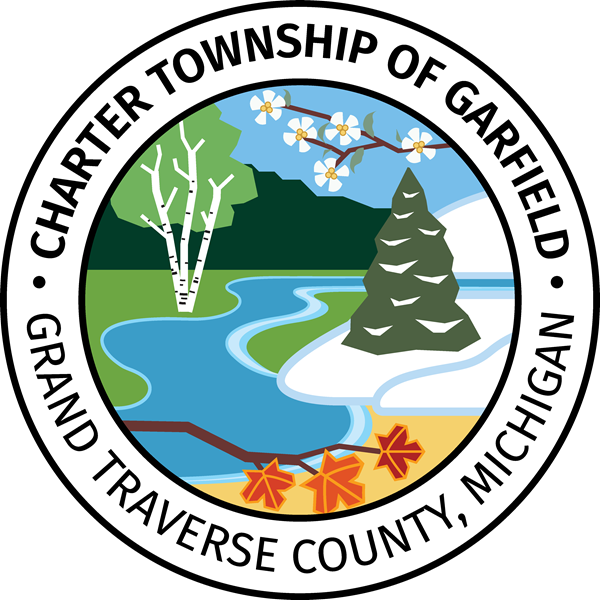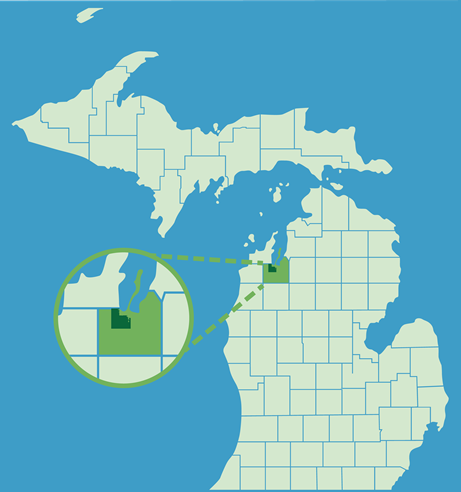Category Specific
Assessing
With the passage of Proposal A of 1994, taxable value (the value you pay your property taxes on) was separated from your assessed value. Assessed value, also known as your State Equalized Value, must represent 50% of the property’s True Cash Value. This number also represents a maximum limit of the taxable value. In the year following a transfer of ownership, the two must be equal. In any other year, your taxable value will be the lesser of the SEV or your capped value calculation. If you have owned your property through periods of rapid growth, it is possible for there to be a substantial gap between your SEV and your capped value calculation. In this instance, you will still see an increase in your Taxable Value, up to the point it reaches the limit of the SEV.
The SEV represents 50% of the property’s True Cash Value. True Cash Value is a term defined by law, and is specifically NOT purchase price. Your sale may be affected by numerous variables that may influence the individual transaction, that have no bearing on the property itself. To minimize the effect of these variables, all sales within a neighborhood (similar characteristics) are reviewed together to determine a usual selling price based on standardized units of comparison.
For tax years 2006-2009, P.A. 13 of 2006 allows the July and December Boards of Review to correct errors of “incorrectly reported and omitted property”. The ability of the July and December Boards of Review to make these changes will end with the 2009 year, absent of an amendment to the law; however the Michigan State Tax Commission always has the ability to make these changes under MCL 211.154. Please review your valuation statement, and if such an error has occurred we would be happy to assist you with the 154 petition process.
IMPORTANT: Applies only to real property or to a personal property assessment based on a timely filed statement. The STC refuses to amend personal property assessments where a statement was not filed as required by law.
All businesses with tangible assets within a local jurisdiction are required by law to file a Personal Property Statement with that jurisdiction by February 20 of that year. This statement is the basis for your personal property assessment. Garfield Township will accept these statements through the close of the March Board of Review, and petition the Board of Review on your behalf to accept these statements as filed. In the absence of a timely filed statement, we are required by law to place an assessment on the property based on our reasonable estimate of the value of the business assets. In most cases, these will begin with reported values of similar businesses. Statements received after the close of the March Board of Review will not be accepted for that year, but will be entered as a starting base for the following year should we not receive one in that year requiring another estimate.
IMPORTANT: If you do not timely file a statement, the assessed value can not be changed for that year, even if you subsequently file.
There is one time each year during the March Board of Review in which you can make your appeal, either in person or by letter. Read this helpful document on how to make your appeal.
Clerk
There are no elections scheduled for 2025 for the Charter Township of Garfield.
Please see the Precinct Map to identify your voting location.
Due to the passage of the statewide ballot proposal 2022-2, Voting Initiative; Voters may request to be placed on the permanent ballot list. Voters on this list automatically receive a ballot for each election eligible. To be added to the Permanent Mail Ballot List, a voter must return an Absentee Ballot application and check the box, “Automatically send me an absent voter ballot for each future election for which I’m eligible”. They must make this selection on that application, and it cannot be any other written or verbal request.
For more information, please contact the Clerk’s Office: 231-941-1620 or visit this website: https://www.michiganvoting.org/permanent-mail-ballot-list.
Garfield Township has seven precincts. Your precinct location is determined by your address. You vote at the same place for all elections. Refer to voting precinct maps on our website, view Michigan Voter Information Center website, or you may call the clerk’s office for a new voter registration card which gives the name and location of your voting precinct.
View Michigan Voter Information Center website, where you will be asked to input your information. If you are registered to vote, it will tell you your voting location. You may also call the Township Clerk to determine if you are registered to vote in the Township.
Yes. You must apply for an auction permit with the Township Clerk at least 10 days prior to the date of the auction. There is a $20 permit fee.
Planning
You will find the submittal deadline dates on the Development Process Information page.
Please come in and speak with us. A successful request for rezoning depends upon a number of factors, including the Future Land Use Plan, the land uses presently surrounding your property, and the existing zoning in the vicinity. Although nothing is certain, we can try to give you an idea on if the Planning Commission will be agreeable to your request.
Yes, but currently all wind turbines require a Special Use Permit, which can be an expensive and time consuming process. We are aware of the gaining popularity of the small-wind or personal wind energy systems and are working to simplify the approval process for those smaller systems.
Because of state law, all rezoning requests require multiple steps and a number of months to process. Your request will first be considered by the Township Planning Commission who may recommend to the Township Board whether the request should be approved. The Township Board is the ultimate authority in granting a rezoning request.
It depends on what type of future land use is identified in the Master Plan. The Master Plan identifies varying intensities of future residential and commercial areas, on which rezoning decisions are based. For example, if the Master Plan calls for medium-density residential in your area, it’s unlikely that a request for rezoning to commercial will be granted.
Please click fee schedule to access current fee information.
All persons are eligible to request a zoning ordinance text amendment. Following a formal application and deposit of a $1,000.00 nonrefundable fee, the Township will consider the proposed amendment, and recommend approval or denial of the text (including any changes) to the Township Board. The Township Board is the ultimate authority in granting a zoning ordinance text amendment request.
Uses permitted within your particular zoning district are identified in the Zoning Ordinance. Uses that are permitted “By Right” are reviewed and approved through the Planning Department, while uses that are permitted by “Special Use Permit” undergo a more thorough review by the Planning Commission.
Land division requests are processed by the Planning, Zoning, and Assessing Departments. Please contact the Assessing Department.
Because of potential adverse impacts upon nearby properties, some uses are listed as Special Uses. The Special Use review criteria gives the Planning Commission additional authority on ensuring that the use will not be a nuisance to neighboring properties, including the ability to require significant site plan modifications such as additional landscaping or lowered lighting levels. Unlike a use that is permitted By Right, the Planning Commission is not obligated to approve a request for a Special Use Permit.
An application for Special Use Permit requires introduction to the Planning Commission, followed by a public hearing before the Planning Commission, followed by review and approval or refusal of the application by the Planning Commission. At a minimum, this process will take three meetings of the Planning Commission – one to introduce the application and schedule it for public hearing, one to hold the public hearing , and one to conduct a findings of fact on the application. More meetings may be required if the Planning Commission is not satisfied with the information presented or if they require additional time to review the application and render a decision. Because of the number of meetings and public notifications required by law, the application will take at least one month to process, and often more.
As noted above, approval of an SUP application is not guaranteed.
Zoning
The Township did not sign HOA documents and is not a participant in that private agreement. Meeting particular subdivision or condominium restrictions is the responsibility of the property owner and his/her builder.
The Charter Township of Garfield Township Zoning Ordinance is designed to implement and be consistent with the goals, objectives, policies, and strategies of the adopted master plan through complete, integrated, effective, and concise land development regulations.
The zoning and land-use regulations set forth in ARTICLE 2, Definitions, and ARTICLE 3, Zoning, of this ordinance promote the public health, safety, morals, or general welfare of the state, the region, and the local government, and protect and preserve places and areas of historical, cultural, architectural, or environmental importance and significance.
The subdivision regulations set forth in ARTICLE 4, Procedures, and ARTICLE 5, Development Standards, of this ordinance promote the health, safety, morals, or general welfare of the local government and the safe, orderly, and healthful development of the local government, taking into account all factors both on and off the site of the subdivision. The processing procedures set forth in ARTICLE 4 consolidate regulations governing the processing of approvals for the development of land. They ensure that notification and procedures comply with state law, provide ample opportunity for public participation in the land development process, provide for the efficient and timely processing of development approvals, and promote the readability of the document for the general public and for applicants requesting development approvals. The development standards in ARTICLE 5 consolidate the substantive standards relating to the issuance of development approvals for zoning and subdivision approval in order to provide clarity and certainty in the development approval process.
ARTICLE 6, General Use Regulations, of the ordinance establishes specific standards and exceptions to standards, for certain uses, structures, and facilities.
ARTICLE 7, Supplemental Use Regulations, of the ordinance provides specific development standards for designated uses. These establish supplemental conditions that protect the public while establishing predictable standards for the applicant.
ARTICLE 8, Nonconformity, of the ordinance protects legal nonconforming uses and vested rights in accordance with state and federal decisional and statutory law.
ARTICLE 9, Submittal Requirements, of the ordinance provides standards for Application submittal requirements to provide guidance to applicants in the submittal of development approval applications, to avoid the unnecessary expenditure of public resources for the processing of incomplete applications, and to avoid unnecessary delay in the approval of applications for development approval.
ARTICLE 10, Administration, of the ordinance establishes various administrative agencies involved in the development approval process, as well as the role of administrative and legislative bodies.
ARTICLE 11, Legal Status, establishes the validity and severability of the ordinance.
A setback is the minimum distance a structure is required to be located from the property line, road right of way, lake, river, stream, etc.
A setback is measured from the furthest extruding point of the structure (typically the roof overhang).
A land use permit is needed for a change of use, any addition to an existing structure, a new structure of 100 square feet in size or more (including sheds and decks), or the disturbance of 100 square feet or more of earth. Please give us a call so we may guide you through the process.
It depends on the application but usually 24-48 hours.
This depends on the zoning district. Within all districts EXCEPT the residential and agricultural districts, an accessory building must comply with all setbacks. Generally, this applies to non-residential areas such as commercial or industrial.
In the residential and agricultural districts, sheds or pole barns must comply with front and side setbacks, but may be located a minimum of 10-feet from the rear yard property line, which is actually within the regular setback.
For additional information please see Zoning Ordinance Section 611.
The waterfront setback is 50 feet from the Ordinary High Water mark.
Short-term rental of a residential dwelling for any period of less than 30 days is currently not allowed in Garfield Township. Although not allowed within a residential dwelling, short-term rentals may be permitted in certain zoning districts as bed and breakfasts, hotels and motels, campgrounds and other similar uses. For more details, feel free to check out our zoning ordinance or contact our office to speak with our staff.
Building
Yes, unless the pool is prefabricated and less than 24 inches deep. We have a swimming pool requirement booklet in our office to aid you in your project.
Fees vary from project to project, so please give us a call and we’ll help you determine what any applicable building permit fees for your project will be.
In residential areas a building permit is not required for a detached accessory structure under 200 square feet. In commercial areas, anything under 120 square feet does not require a building permit. However, as always contact the zoning department regarding their requirements.
No, unless there are structural repairs such as replacing sheathing or the repair of trusses or rafters. Please note that only a maximum of two layers of shingles are allowed.
Decks not exceeding 200 square feet in area, that are not more than 30” above grade at any point, are not attached to a dwelling, or within 36” of a dwelling or its accessory structures, and do not serve any ingress or egress door of the dwelling or its accessory structures.
This information is available at RESCHECK.GOV. Please note that you will be required to complete a one-time user registration at this website.
42 inches, unless sandy well draining soils are present, where the requirement then becomes 24 inches. Pole barns typically require 48 inch deep footings.
Sixty pounds per square foot.
The plans should show enough detail to ensure code compliance. We have a plan submittal requirement handout in our office for your convenience. Commercial projects typically require an engineer or architect’s stamp.
Unfortunately no, due to possible conflict of interest concerns. However, we would recommend talking with the home builders association or asking friends, co-workers, or neighbors for any recommendations they may have.
Treasurer
There are multiple options available for you to use when paying your property taxes. Some have fees attached, due to bank charges that cannot be absorbed by the Township. Please visit Treasurer for complete information.
Yes. Garfield Township is able to provide our taxpayers with the ability to pay taxes with a credit card or debit card. Cards accepted are VISA, MasterCard, Discover Card or American Express. There is a 2.8% or $2.00 min convenience fee charged for this service. Pay online now by clicking the below link
Yes. Click on the below link, “BS&A Property Info”. You may need to create a user name and password that will identify you as the owner of the property. One parcel # can be assigned free look ups with each user id. If you want to look at more than one parcel #, there is a $2 per parcel look up fee.
If you are in need of financial assistance, there are some things that we can check to see if you might qualify for some help:
- Summer deferment – If you qualify, this option extends the due date for summer taxes from September 14th to February 14th of the next year. Using this option makes both summer and winter taxes due at the same time (Feb.14) with no penalty or interest if paid by that date. Contact the Treasurer’s office to see if you qualify.
- Hardship exemption – if your income is below a certain level, you may qualify to have a portion of your taxes exempt. You must contact the assessing office to see if you qualify.
- There may be other types of exemptions available. You must contact the assessing office to determine your eligibility.
2018 Millage Rates
100% Homestead: summer = 18.7991 winter = not currently set
Non-Homestead: summer = 36.7991 winter = not currently set
2017 Millage Rates
100% Homestead: summer = 18.6793 (Winter rate 8.8017)
Non-Homestead: summer = 36.6793 (Winter rate is 8.8017)
2016 Millage Rates
100% Homestead: summer = 18.7665 (winter rate 8.8029)
Non-Homestead: summer = 36.7665 (winter rate 8.8029)
2015 Millage Rates
100% Homestead: summer = 18.7755 (winter rate 8.8747)
Non-Homestead: summer = 36.7755 (winter rate 8.8747)
2014 Millage Rates:
100% Homestead = summer – 18.8155 (winter rate 9.7512)
Non-Homestead = summer – 36.8155 (winter rate 9.7512)
2013 Annual Millage Rates:
100% Homestead = 28.4715 (summer = 18.8205 & winter = 9.6510)
Non-Homestead = 46.4715 (summer = 36.8205 & winter = 9.6510)
2012 Annual Millage Rates:
100% Homestead = 27.4657 (summer = 18.8305 & winter = 8.6352)
Non-Homestead = 45.4657 (summer = 36.8305 & winter = 8.6352)
2011 Annual Millage Rates:
100% Homestead = 27.4633 (summer = 18.8305 & winter = 8.6328)
Non-Homestead = 45.4633 (summer = 36.8305 & winter = 8.6328)
2010 Annual Millage Rates:
100% Homestead = 27.724 mills (summer = 18.7955 & winter = 8.9285)
21Non-Homestead = 45.724 mills (summer = 36.7955 & winter = 8.9285)
Taxes are based upon Taxable Value. 1 mill equals $1. per $1,000. of taxable value.
All taxes billed are for the period of January 1 through December 31. The taxes are collected in two portions (summer and winter) to make it easier on the taxpayer. Different taxing authorities collect at different times. For instance, the Traverse City Area Public Schools collect their portion of tax dollars on the summer tax bill, but are not listed on the winter tax bill. The Fire Department collects its portion of tax dollars on the winter tax bill, but are not listed on the summer tax bill.
There is one time each year during the March Board of Review in which you can make your appeal, either in person or by letter. Read this helpful document on how to make your appeal.
There are two types of personal property taxes.
Business personal property taxes are assessed to business owners on the assets they use to operate their business. A business needs to report assets to the Township once a year on the annual Personal Property Statement. These statement forms are mailed to all businesses in the township once a year in December. They must be returned to the assessing office no later than February 20th each year. Personal property taxable value is determined from the statement. If you need help to complete your statement, one of our assessors would be happy to assist you.
Here is a helpful brochure for business owners about personal property taxes.
Mobile Home personal property taxes – If you own a mobile home that is located in Garfield Township, you may be assessed personal property taxes on any shed, porches or other outbuildings located near your mobile home.
Here is a helpful flyer for mobile home owners regarding personal property taxes.
For the purpose of personal property taxes, “tax day” is December 31st of each year. If your business is operational on this day, then you will be assessed personal property taxes for the whole next year. As a business owner, if you are planning to go out of business, it is best to do so before Dec. 31st.
If your commercial business qualifies and has assets with a true cash value under $80,000, you may possibly qualify for an exemption. You must contact our Assessing Department to determine your eligibility and complete the necessary paperwork.
Yes. If your business will be closing or relocating outside of Garfield Township, you must notify the township so that we can record a closing or moving date for your business. This will allow us to remove your business from future tax rolls
Soil Erosion Control
Soil Erosion permits are required for all projects involving earth moving activities that occur within 500 feet of surface water (as defined) and disturb more than 225 square feet or disturb one or more acres. Soil Erosion exemptions are allowed for those projects that:
- Disturb less than 225 square feet and are stabilized within 24 hours.
- Include only post holes for decks.
- Include only borings and percolation tests when stabilized within 24 hours of the initial earth change and disturb less than 225 square feet.
- Include only shrub and tree removal when no vegetation is disturbed.
Include only the plowing and tilling of fields for crop production.
Part 91 of Act 454 of 1994 requires a Soil Erosion Control permit for any earth change that disturbs one or more acres, or within 500 feet of a lake, stream or wetland. Exempted activities include agricultural practices and some logging and mining activities. Access roads to the logging and mining sites and ancillary activities associated with logging and mining operations are not exempt. The removal of clay, gravel, sand, peat, or topsoil is not considered “mining” and therefore requires a permit.
The timing sequence gives us a general idea of when your project will begin and when it will be finished and also lays out a sequence of steps to follow for erosion control. Temporary measures, such as silt fence, check dams, or vegetative buffers should be installed at the beginning of the project. The stone aggregate drive should also be at the start of construction. Permanent measures, such as grass, shrubs, pavement or other vegetation should be installed as soon as possible after final grade. Removal of temporary measures should be carried out after the site is completely stabilized. For major projects please note in determining a timing sequence, detention/retention/sediment pond installation should occur at the beginning of a project and that catch basin covers should be cleaned at least once a month until permanent measures are functioning.
Erosion controls are more effective than sediment controls and are preferred because they keep the soil in place and ensure the protection of the site. Whenever possible, the primary protection of a site should be erosion controls. One of the most common causes of sedimentation is poor maintenance of erosion controls. When developing a soil erosion control plan, the designer should answer the following questions:
- Where is erosion and sediment control needed?
- What kind of erosion and sediment control measures are appropriate?
- Should a large project be phased to minimize erosion?
- What type of maintenance will be necessary to ensure proper soil erosion and sedimentation control?
Part 91 lists a number of penalties for failing to comply with the Act. In addition, Garfield Township’s Control of Soil Erosion and Sedimentation Ordinance No. 78 imposes further penalties for willful violations. Following is a partial list:
- A person who violates Part 91 (the soil erosion control act) is subject to a civil fine of up to $25,000 for each day of violation.
- Permit fees are doubled for projects started without first obtaining a permit.
- A cease and desist order may be issued until compliance is obtained.
- The Township Enforcing Agent may install or maintain control measures to bring site into compliance with Part 91 and bill the landowner for costs incurred.
- A person may be ordered to restore all areas affected by the violation. This includes areas offsite that may have been affected.
- Construction permits may be denied or revoked.
If your project is within 500 feet of a Lake, Stream, or wetland, it will require EGLE review/permitting.
Contact EGLE: EGLE Permits
If your disturbed area is greater than 5 acres, it will require NPDES review/permitting.
Contact NPDES: National Pollutant Discharge Elimination System (NPDES) Permits



